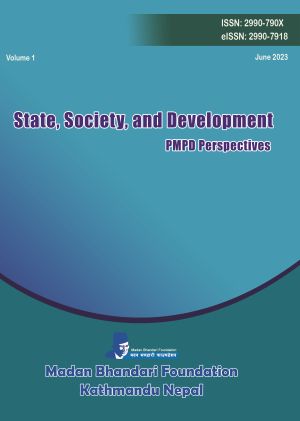Influence of PMPD on Twenty-First Century’s Political Movements in Nepal
DOI:
https://doi.org/10.3126/ssd.v1i1.58474Keywords:
PMPD, Socio-economic development, Creative postulation, Fifth general convention of communist party of Nepal, UML, Political thoughtsAbstract
General Secretary Madan Bhandari’s widely embraced concept, People’s Multiparty Democracy (PMPD): A Program of Nepali Revolution, received overwhelming endorsement during the Fifth Congress of CPN (UML) in 1993. This ideology seamlessly melds democracy and socialism, with distinct Nepali societal characteristics. Originally introduced as a political program, PMPD has since evolved into an indispensable guiding principle in shaping political developments following the restoration of democracy in 1990. In the wake of the publication of the 1848 Communist Manifesto by Karl Marx and Friedrich Engels, PMPD stands as a profoundly innovative contribution to communist political philosophy. It stands out for its successful integration of the fundamental tenets of democracy and the well-being of the populace. During a pivotal moment in the global communist movement, marked by the disintegration of the USSR and the downfall of communist governments worldwide, PMPD encapsulates the essence of a New Democracy, embodying the defining characteristics of the burgeoning capitalist democratic revolution within the unique context of Nepali geopolitical dynamics. As a revolutionary concept, PMPD is underpinned by the philosophical cornerstone of opposing feudalism, imperialism, and the stranglehold of comprador capitalism. It achieves this through people-centric programs, active participation in mainstream politics, and the promotion of rational, merit-based leadership. PMPD plays a pivotal role in facilitating a seamless transition from a century-long, centralized unitary system with monarchy to a federal democratic republic. Furthermore, the Constitution of Nepal 2015 incorporates several noteworthy features, including dynamism and flexibility, while firmly afirming the sovereignty and state power vested in the people through periodic elections.
Downloads
Downloads
Published
How to Cite
Issue
Section
License
Once published, an article in this Journal is not permitted to publish in other journals or similar publications without the permission of the Foundation. Contents and perspectives presented in the articles in the journal are solely of the authors.




